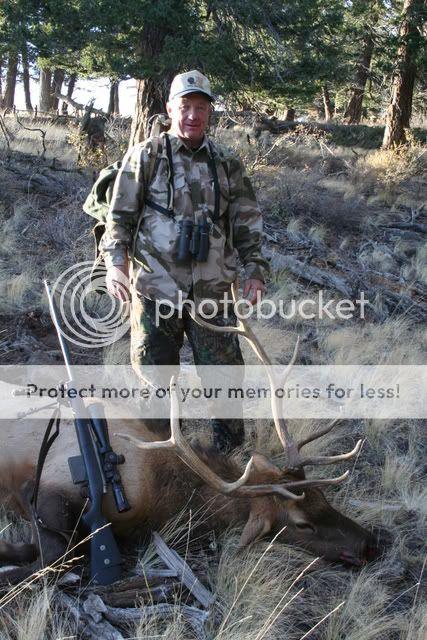Fact is a larger diameter non expanding bullet will always leave a larger diameter wound channel than will a smaller diameter bullet. All bullets (including expanding bullets) create a temporary wound channel
Bullet placement always trumps expansion, thus accuracy is the trump card. Non expanding bullets do indeed kill
Never say "never" or "always".
First off, I want both accuracy/placement *and* expansion. That's why I hunt with bullets that are designed to expand. Given the opportunity, I will always go for the double lung shot with a good expanding bullet which will cause a good deal of cavitation and hemoraging, which in-turn will result in a relatively quick death with very good chances of a recovered game animal. I haven't lost one yet to the double lung and all went down very quick, usually within a couple of steps but never more than 50 yards (with a 300 WSM, 7mm RM and just recently a 25-06)
If I had used a pointy, non expanding type bullet s on these double lung placed shots, what do you suppose the results would have been? I believe many of thes animals would have run a looooong way, especially the 900 lb bull elk, and he was heading down hill in some very rugged country. Instead, he piled up on his first leap. Not only would they run a long way, but they would also leave little to no blood trail.
I would have to agree that if bullet placement meant a head shot, or spine shot, the results would obvious. In a heart shot, any projetile will porduce a fairly quick result but a semi destroyed heart will have a little quicker result than one that is just pierced. Is that what you mean by placement? Are you saying one should plan on using a non-expanding bullet @ 1000 yds and place it in the heart, brain or spine? When it comes to a heart shot, not only do you need an accurate rifle, you need to accurately dope the conditons and identify it's location depending on the angle you're shooting. A deer heart is a little bigger than a baseball. So are you suggesting planning and making a 1000 yd heart shot with a 6.5 SMK (or 338 SMK) on a deer that does not have an orange POA spot sprayed on its hide? Thank you, but I'll take an expanding bullet and attempt to place it through the lungs. And BTW, a 1/2 mph breeze will move your bullet about 4-6" away form your baseball size target.
I'm not exactley sure what you're saying here...???
Fact is a larger diameter non expanding bullet will always leave a larger diameter wound channel than will a smaller diameter bullet.
If you're comparing non expanding larger to non expanding smaller that's true.
But if you're comparing a non expanding .338 to an expanding .277, you're very wrong.... on two counts. First, asuming the .277 expands to 1.5 or greater than it's original diameter, that is a .41 diameter projetile vs a .338 diameter projectile. Second, the expanded blunt frontal shape will cause a MUCH larger permanent wound cavity than the pointy frontal area of the nonexpanded projectile.
All bullets (including expanding bullets) create a temporary wound channel
All bullets make both a temporary and permanent wound channel. Animal tissue is elastic (other than bone) When a bullet passes through an animal some of the tissue is crushed/destroyed which is permenant wound channel and some of it is stretched as a result of hydraulic shock - this is temporary wound channel. A non expanding bullet will leave very little permenant wound channel. As the pointy bullet passes through, it stretches the elastic tissue which comes back to shape. Here are a couple of very good articles on the subject...
Terminal Ballistics
Terminal Ballistics
Terminal Ballistics
I'm not sure what point you're trying to make, but it seems you are paddling up a creek I wouldn't venture to.
Mark



